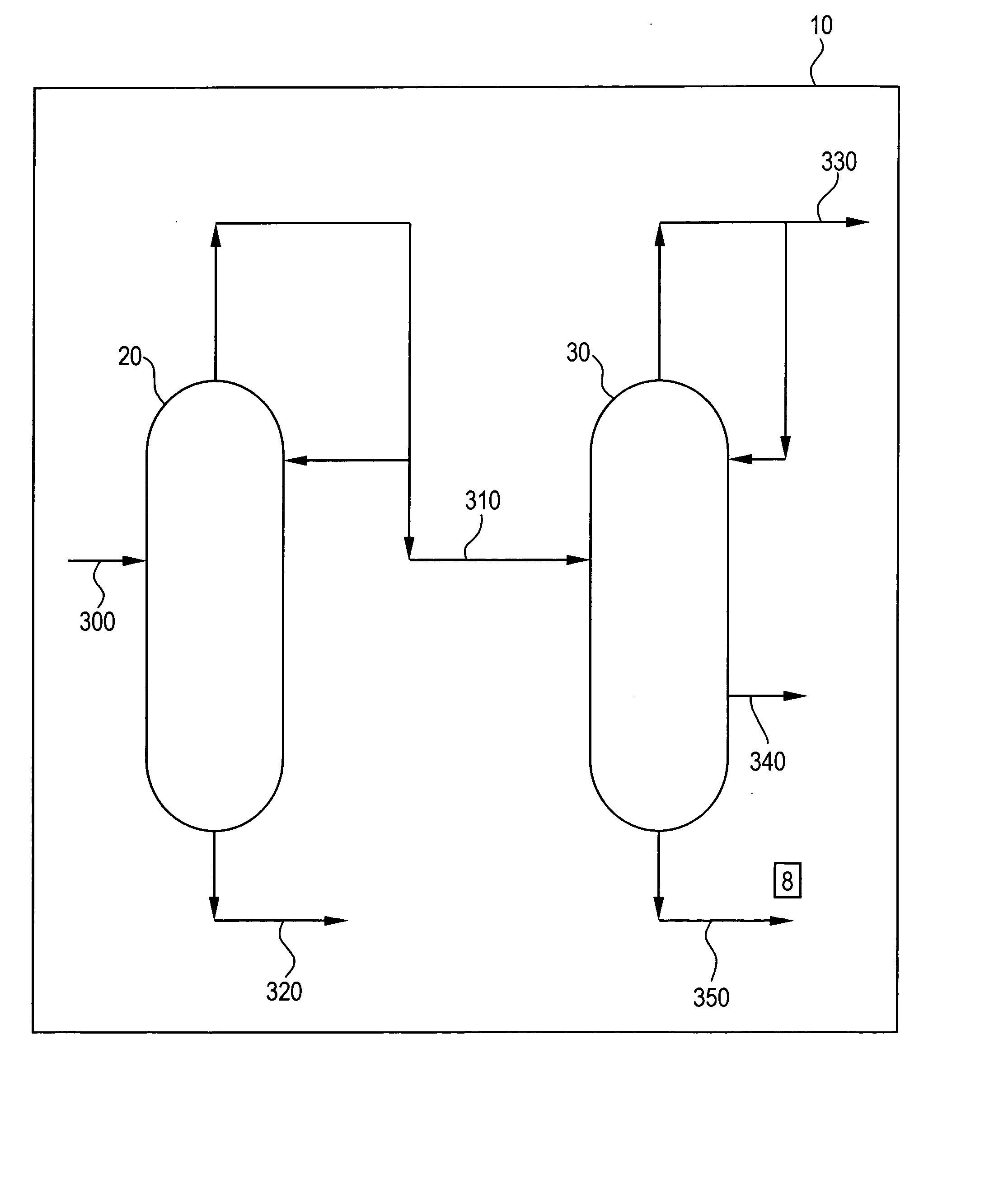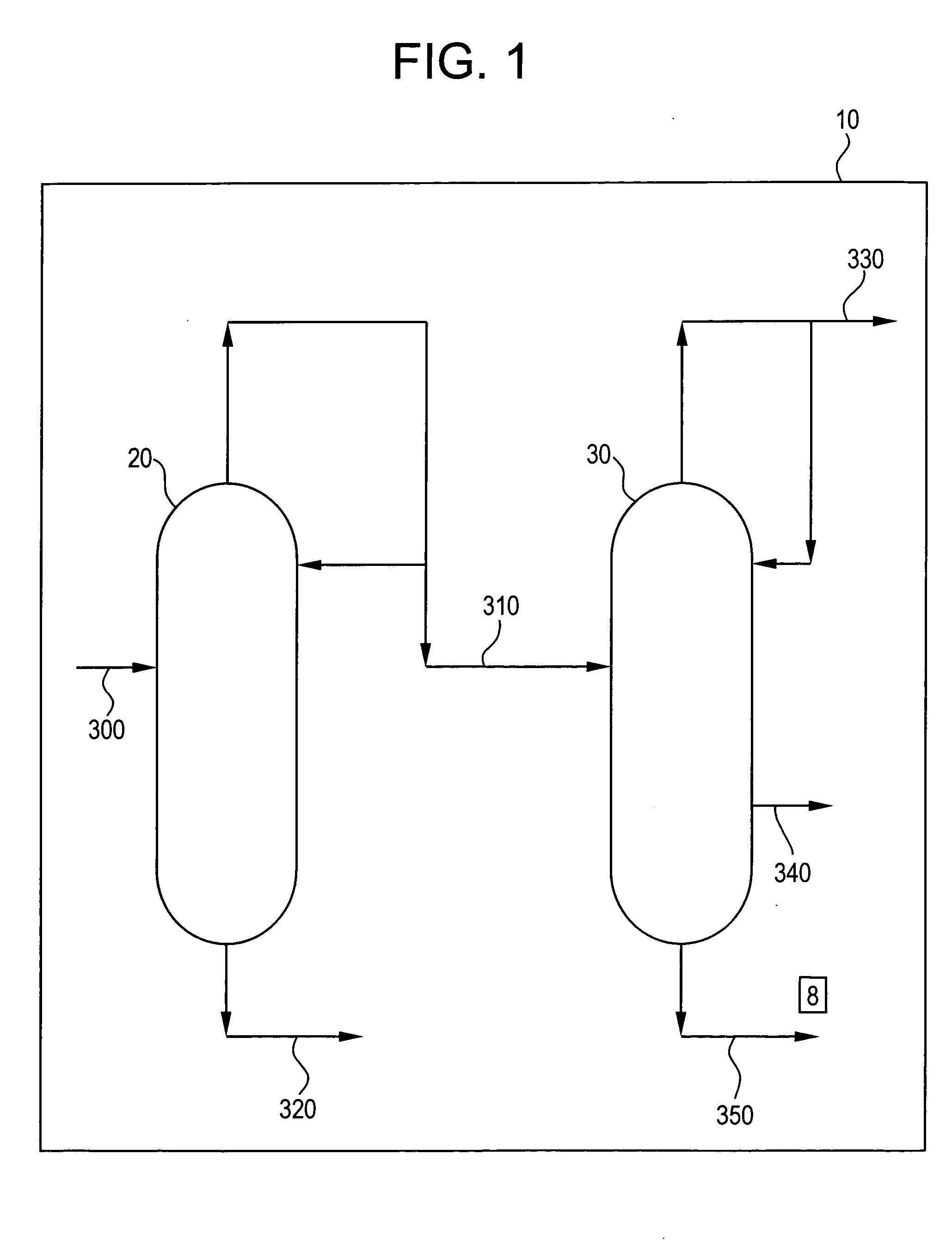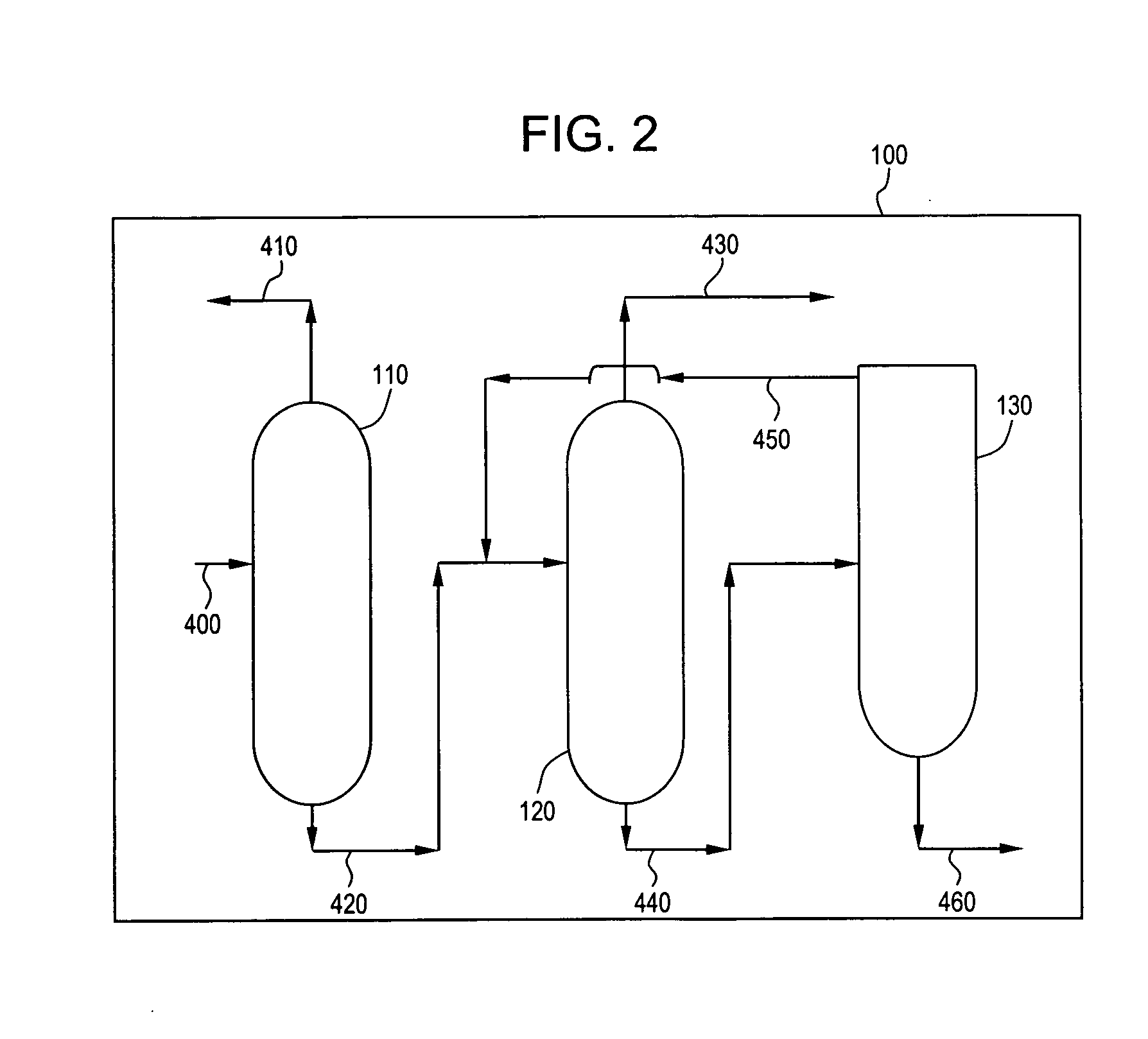Method of purifying 2,6-xylenol and method of producing poly(arylene ether) therefrom
a technology of arylene ether and xylene ether, which is applied in the field of purifying 2, 6dimethylphenol, can solve the problems of odor-sensitive applications that have been discouraged from adopting them, and achieve the effect of high yield
- Summary
- Abstract
- Description
- Claims
- Application Information
AI Technical Summary
Benefits of technology
Problems solved by technology
Method used
Image
Examples
example 1
[0027] A mixed alkylated phenol feed stream of 5.6 ton / hr was supplied to a position corresponding to plate 37 of a distillation column containing 84 theoretical plates. The top product (distillate) flow rate was 5.2 ton / hr and bottom flow rate was 0.7 ton / hr. The reflux ratio was 4.9. Analysis of the bottom product and top product gave the results in Table 1.
1 TABLE 1 Bottom product Top product 2,4,6-trimethylanisole (wt %) 0.892 0.012 2,6-dimethylcyclohexanone (wt %) 0.0042 0.0475 2,6-dimethylphenol (wt %) 2.66 69.6
[0028] The calculated % removal of TMA (ratio of the mass flow rate in the bottom stream vs. the column feed) amounts to 85% and for 2,6-dimethylcyclohexanone amounts to <1%.
example 2
[0029] The top product from Example 1 was fed at a flow rate of 4.8 ton / hr to a position corresponding to plate 57 of a second distillation column containing 84 theoretical plates. The top product flow rate, corresponding to the second light fraction, was 1.3 ton / hr and 2,6-dimethylphenol-enriched second heavy fraction flow rate of 3.5 ton / hr. The reflux ratio was 27.5. Analyses of the top product and the second heavy fraction gave the results in Table 2.
2 TABLE 2 top product second heavy fraction 2,4,6-trimethylanisole (wt %) 0.0011 0.0255 2,6-dimethylcyclohexanone (%) 0.16 0.017 2,6-dimethylphenol (%) 1.30 99.85
[0030] The calculated % removal of 2,4,6-trimethylanisole (ratio of the mass flow rate in the top product stream vs. the column feed) amounts to 1.5% and for 2,6-dimethylcyclohexanone amounts to 78%.
example 3
[0031] A poly(2,6-dimethylphenylene ether) was prepared by polymerization of 2,6-dimethylphenol in toluene solvent. The toluene solvent was continuously recycled. A feed stream of toluene containing a low concentration of non-volatile low molecular weight poly(2,6-dimethylphenylene ether) oligomers was supplied at a feed rate of 7.15 ton / hr to an evaporation column. The toluene and lower boiling impurities were evaporated and a bottom product was discharged at a flow rate of 510 kg / hr. This bottom stream was subsequently fed to a LUWA.RTM. wiped film evaporator to achieve additional vaporization and recovery of toluene with a residual bottom stream percent solids of 5 to 18 weight percent. Concentrations of odorous impurities in the final poly(2,6-dimethylphenylene ether) powder were determined and are present in Table 3. Concentration are expressed in parts per million by weight (ppmw).
3 TABLE 3 Odorous impurity Concentration (ppmw) 2,4,6-trimethylanisole 32 2,6-dimethylcyclohexano...
PUM
| Property | Measurement | Unit |
|---|---|---|
| weight percent | aaaaa | aaaaa |
| weight percent | aaaaa | aaaaa |
| weight percent | aaaaa | aaaaa |
Abstract
Description
Claims
Application Information
 Login to View More
Login to View More - R&D
- Intellectual Property
- Life Sciences
- Materials
- Tech Scout
- Unparalleled Data Quality
- Higher Quality Content
- 60% Fewer Hallucinations
Browse by: Latest US Patents, China's latest patents, Technical Efficacy Thesaurus, Application Domain, Technology Topic, Popular Technical Reports.
© 2025 PatSnap. All rights reserved.Legal|Privacy policy|Modern Slavery Act Transparency Statement|Sitemap|About US| Contact US: help@patsnap.com



